Last week sent Star Trek: Prodigy into the depths of Star Trek’s on-screen history to teach Dal a new command lesson, as the young explorer tried his hand at the time-tested Kobayashi Maru test in “Kobayashi.”
After my kids and I thoroughly enjoyed that delightful holographic escapade, I had a chance to chat with Star Trek: Prodigy writer/producer Aaron J. Waltke — who developed and wrote the episode — in a wide-ranging discussion that touches upon everything from finding just the right “Live long and prosper” recording, sourcing ideas from Star Trek tie-in media, and even that Kathryn Janeway statue in Indiana.
In this first half of a two-part interview, we dive into the behind-the-scenes efforts that went into bringing “Kobayashi” to the screen.
This interview has been condensed and edited for clarity.
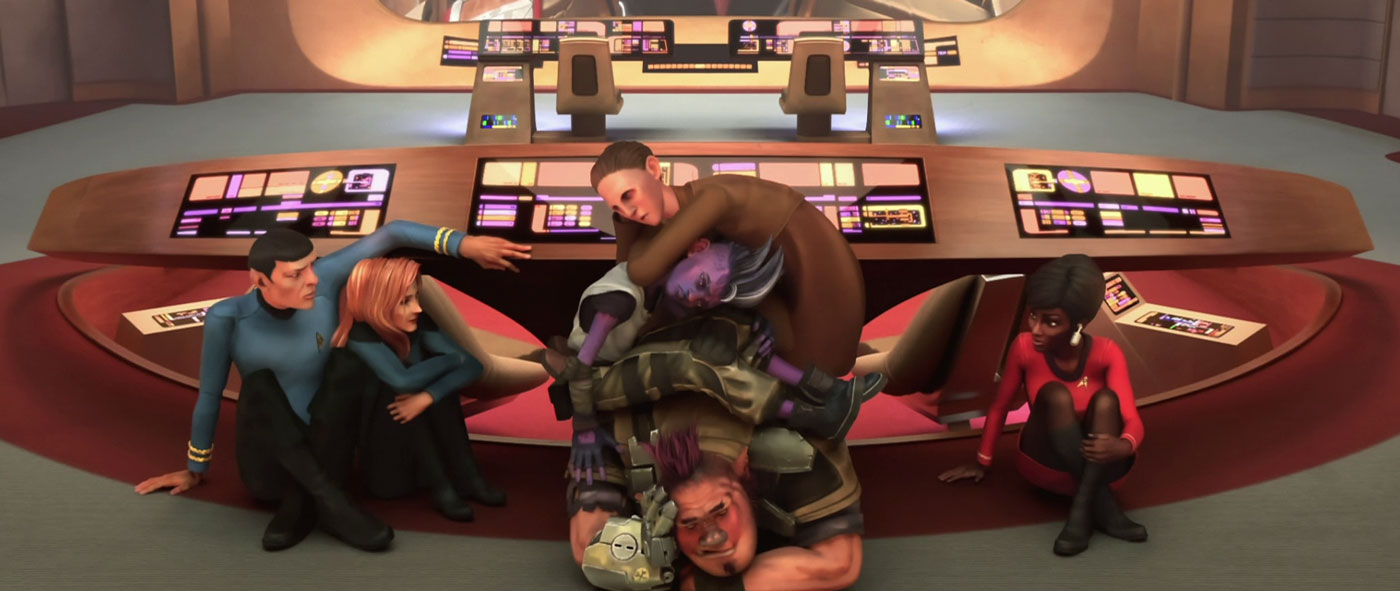
TREKCORE: Prodigy is doing a great job balancing the established lore and canon of Star Trek history with storytelling that isn’t pushing away younger audiences who don’t know all that backstory.
How do you and the writing team find that middle ground when you’re developing these scripts?
AARON J. WALTKE: It’s a tightrope walk, but not that difficult. When we approach the story for any of the shows that the Hagemans and I have worked on, but especially this one, we always try not to think of it as a show for kids or a show for adults but a show for everyone.
That’s known as “four-quadrant” type of storytelling. It was very popular when I was young, like with Amblin Entertainment and the early works of Steven Spielberg thing where you had your Jurassic Park and your Ghostbusters and your ET, which had stuff that enthralled children but also really excited adults as well. It was literally a shared storytelling experience.
That’s something that I think we’ve always tried to strive for. “Kobayashi” was particularly tricky because we were trying to do a slightly more comedic episode — but also one that had a lot of heart and an actual theme about what the spirit of Star Trek could mean to younger audiences. It was very meta in that way.
TREKCORE: How did you land on just which legacy Star Trek characters would become Dal’s holographic crew for his Kobayashi Maru simulation?
WALTKE: It was a long process. When we were in the writers’ room breaking the story with the other writers, there was this talk of, “Okay, but yes, really, what is the best bridge crew?” Of course, everybody from school playgrounds to Star Trek conventions have had that argument over and over again!
Who’s the best engineer? Who’s the best ops? We tried. There are a lot of hardcore Trekkies among the writing team, and we talked very long into the night. There were so many permutations, like “Well, this matchup with this would be great, but then these other two characters work really well together.”
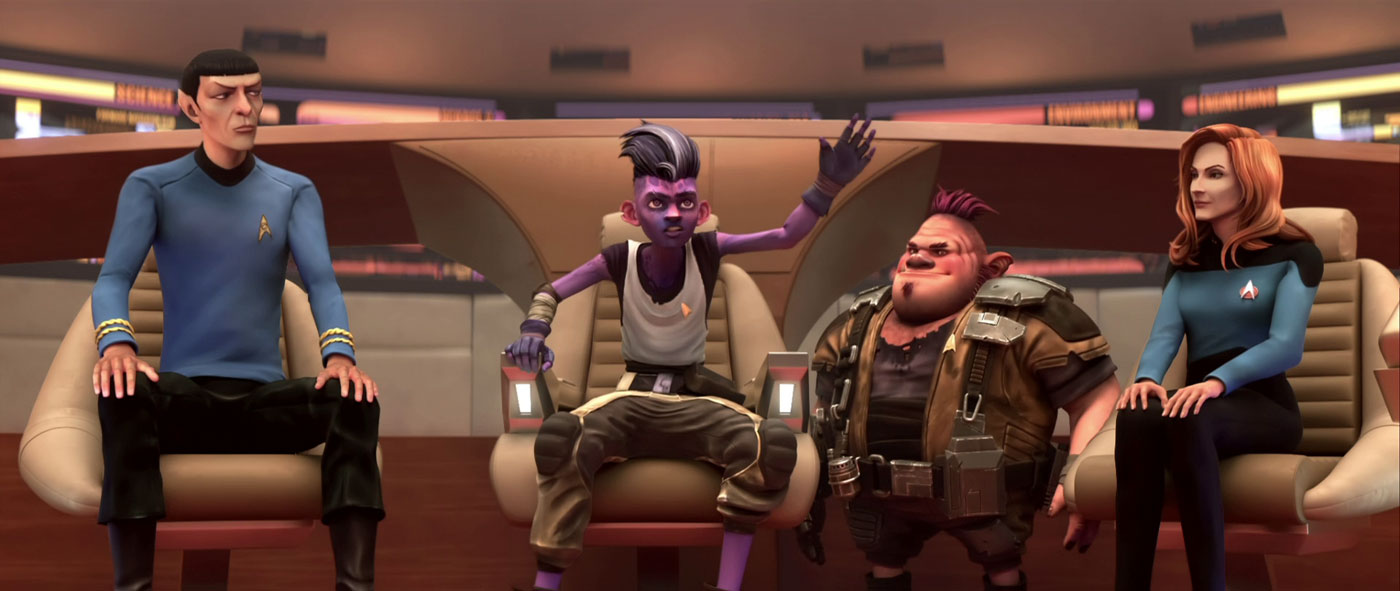
Ultimately, we realized that was a fool’s errand to try to say, “This is the definitive best bridge crew.” In making the episode, there were a lot of challenges and limitations and hoops that we had to jump through that did start to narrow the window of who we would use. Ultimately, we just made a list of our favorite characters and started from there.
There were different things that impacted whether a character could appear, like availability or whether they ever spoke the lines that we wanted to use for the Kobayashi Maru, and if they would line up. It was sort of an evolving process of just like, “Well, okay, that character we can’t use because they’re being used on a different show in a season or two,” or “We just don’t have the right dialogue for this other character, for this particular thing.”
Obviously, there’s episodes like “Balance of Terror” that are all about the Neutral Zone that we could borrow from to help tell the story of what the Kobayashi Maru was, which was important for the Prodigy audience – but in Wrath of Khan, Saavik wasn’t pausing to say, “What’s the Kobayashi Maru? What’s the Neutral Zone?,” so we had to find ways to improvise around that.
In terms of using original-actor voice clips, that decision was made very early on. We talked about all the great Star Trek legacy characters whose actors sadly aren’t with us anymore. And we started thinking, if we wanted to use them, would we just use the character and cast a voice actor who could do a sound-alike performance or something? But we decided, no, the point of this is to celebrate these actors, these characters and the performances that they’ve created.
In my heart of hearts when I was writing this, and the reason I took on this rather large task of trying to source the rights dialogue from 55+ years of archives, was because I wanted to create a space for new audiences and young audiences to get a taste of Rene Auberjonois, Leonard Nimoy, and James Doohan’s performances and their characters and say, “Hey, where can I see more of this?” Because their artistry was so incredible.
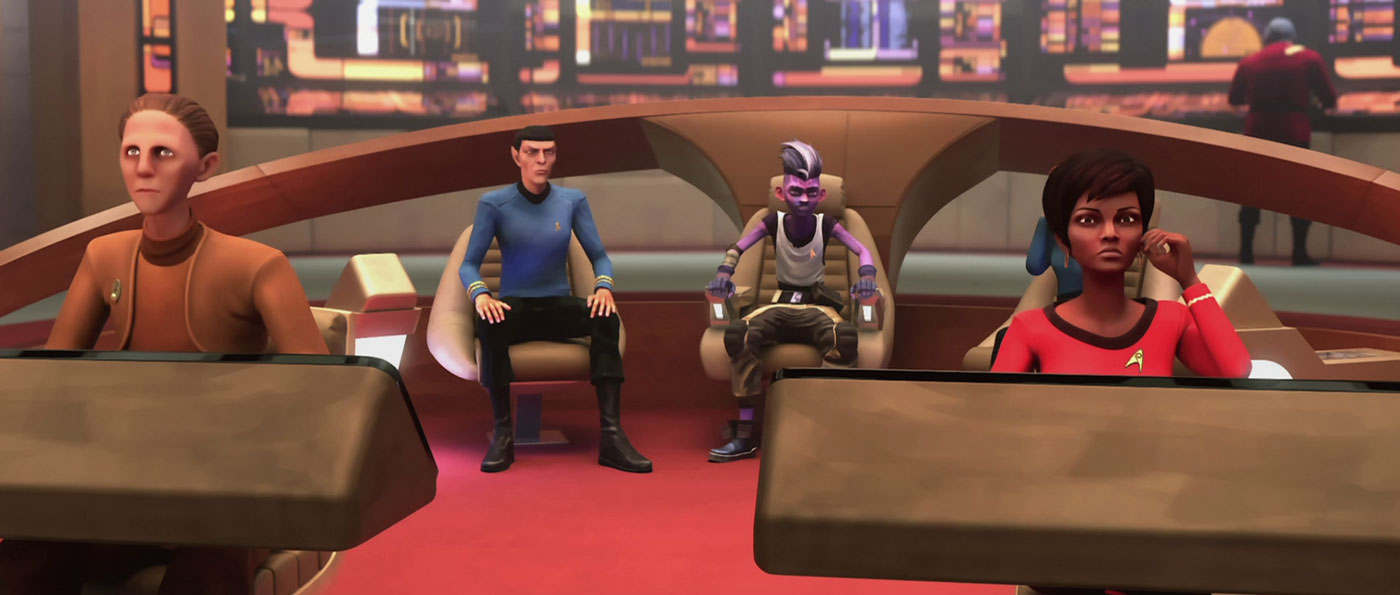
I just wanted a chance, albeit briefly, to get people watching our show for the first time to check out all these amazing other characters that you can see on the other Star Trek shows, and have that be one little springboard into experiencing that.
We were also limited in the number of bridge crew we could use because in animation for television — and with CG animation in particular — there is a physical limit to the number of characters you could have on-screen at the same time and have them look good. Plus, there were also limits to budget and time about how many characters you can actually design for a single episode. Originally, I think I’d gone overboard and wrote like nine characters, but we needed to peel it back to three or four.
It organically started to click together into this really interesting crew of characters you wouldn’t expect to see together on the same bridge, but then you realize they are all at the top of their game and know exactly what they’re doing. Even though he was never technically part Starfleet, I’d argue that Odo was probably one of the greatest security officers that’s ever worked in any Star Trek show; he probably caught more bad guys than Worf.
Uhura is obviously such an iconic character, even though in my opinion, I feel like her character really came into her own in the movies more than the TV show. I think we wanted to honor that as well.
It’s one of those things where I think, all told, I probably did maybe eight or nine drafts and variations of those particular scenes. Sometimes it would almost work but then when you would cut it together, especially a lot of Spock’s dialogue, for whatever reason — including rights reasons or availability reasons — we couldn’t use all of the movies at certain points, for instance.
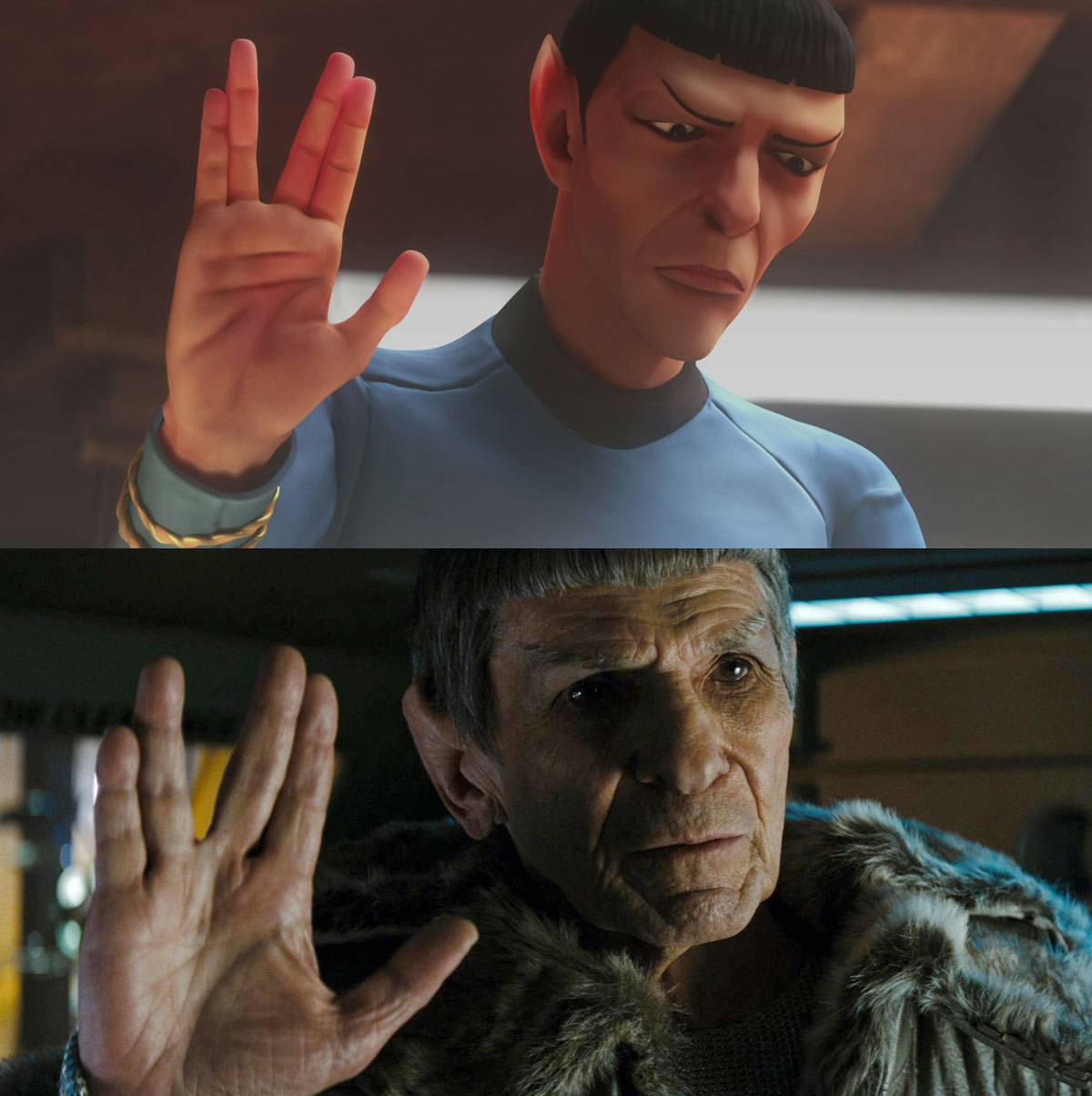
So I was sort of limited there — and you’d be surprised how few times Spock actually says, “Live long and prosper”! I think he only says it maybe eight or nine times in all of Star Trek, which is crazy to me. It was just funny because I would go through and source each one like, “There’s this version, from Star Trek IV….” It would be like almost the performance that I was looking for. I literally went through every single time he said it through his decades of time in the role.
It wasn’t until I hit the 2009 Star Trek film that I heard him perform it and I was like, “Yes, that’s it! Thank God.” That’s the one that I was looking for that had that perfect Nimoy gravitas but also, you could tell that he really was saying farewell and good luck in a way that I think maybe his younger self, when he was just tossing it off, wasn’t thinking about it.
As for Dr. Crusher, thankfully, Gates McFadden was available as our emissary from The Next Generation to fill out the cast roster, and her role helped to stitch some of the story together. She had a really fun time doing it. She even improvised a few lines I believe, including “The degree of your stubbornness belongs in a medical textbook.” That was hers.
It was very hard to find the perfect crew but I think that we found a great one. There’s enough variation and flavor there, and you really do get the sense that as surprising as that matchup is, it’s Dal who is the odd one out – while the rest of the crew are working at full efficiency, he’s the weak link in the chain.
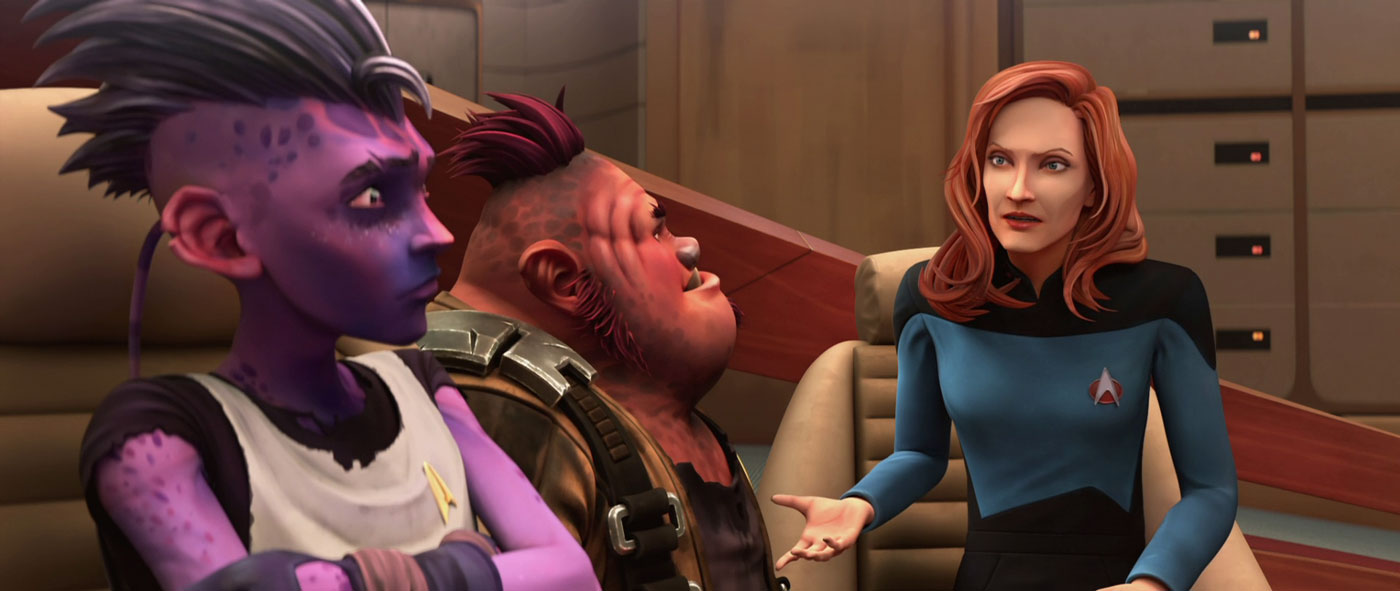
TREKCORE: So what does it take to build a full animated episode out of a puzzle of cut-up dialogue from decades of previous adventures?
WALTKE: I do want to pause for a second and just give a huge shout out to our production crew, and our directors, and our artists, and our editors, and everybody that has worked on this episode with me because literally when I pitched this idea, we all knew it was going to be an incredibly hard episode to make.
It would have been virtually impossible in just about any other show, but everybody basically agreed that it was worth trying to do. They all supported me, and I supported them, and I burned the midnight oil a lot trying to set them up for success and find all the material necessary for the episode.
I think I re-watched about 40 or 50 episodes top to the bottom and read about 90 Star Trek scripts, and did hours upon hours of Boolean searches of the archives – then I’d go through and see if each of the lines I had chosen was right. But sometimes I’d hear the character was picking up a glass or something so we couldn’t use the audiotape. Or he or she would be saying it weird.
Everybody really put in a lot of extra effort to make this as good as it was. I think in my mind I’m always like, “Oh, we could have made it perfect,” but just seeing the response today of how everyone sees the spirit of what we were doing and the tribute we were trying to accomplish, I’m really glad that it came across the way that it did.
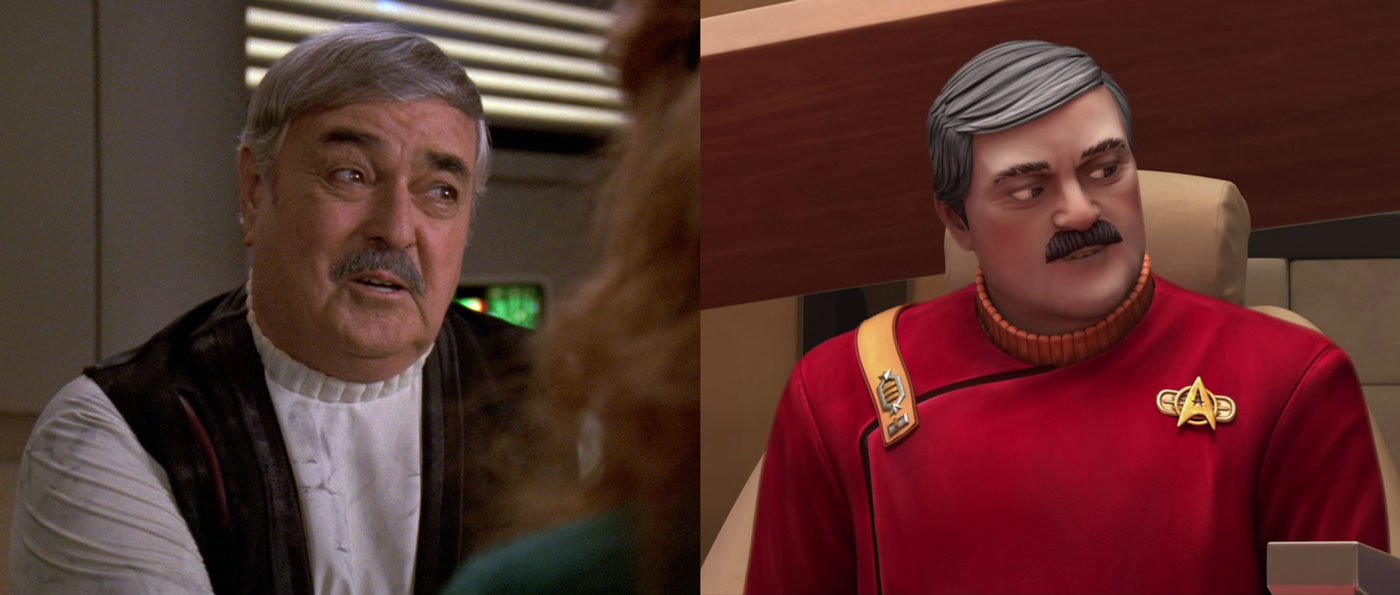
TREKCORE: Using audio from the Star Trek films must have been a challenge as the ViacomCBS merger went through — you mentioned some rights issues impacting movie audio, for example.
Between that and the use of clips from actors who have since passed away, were there a lot of behind the scenes challenges to get the dialogue you needed?
WALTKE: Well, I wasn’t part of any legal discussions but from my understanding, those actors’ estates gave their permission and everything was properly approved there. That was very important to me, because this was meant as a tribute, and I wanted everyone to be okay with it.
As far as the rights for the movies go, I don’t recall the exact legalities of it — but just to give you an idea of the scale, we started writing this episode in mid-2019, which was, before Paramount and CBS had merged and the Star Trek film and television rights were still split up between the two companies.
The idea of a merger had just been announced in the trade press as I was literally just breaking the episode, and I was brought into a meeting with lawyers the next day where they told me, “We’re trying to figure out what from the movies you can and can’t use.” Thankfully, and predictably it all worked out, and by the time the process was finished, I don’t think we ever heard an eye batted from anyone.
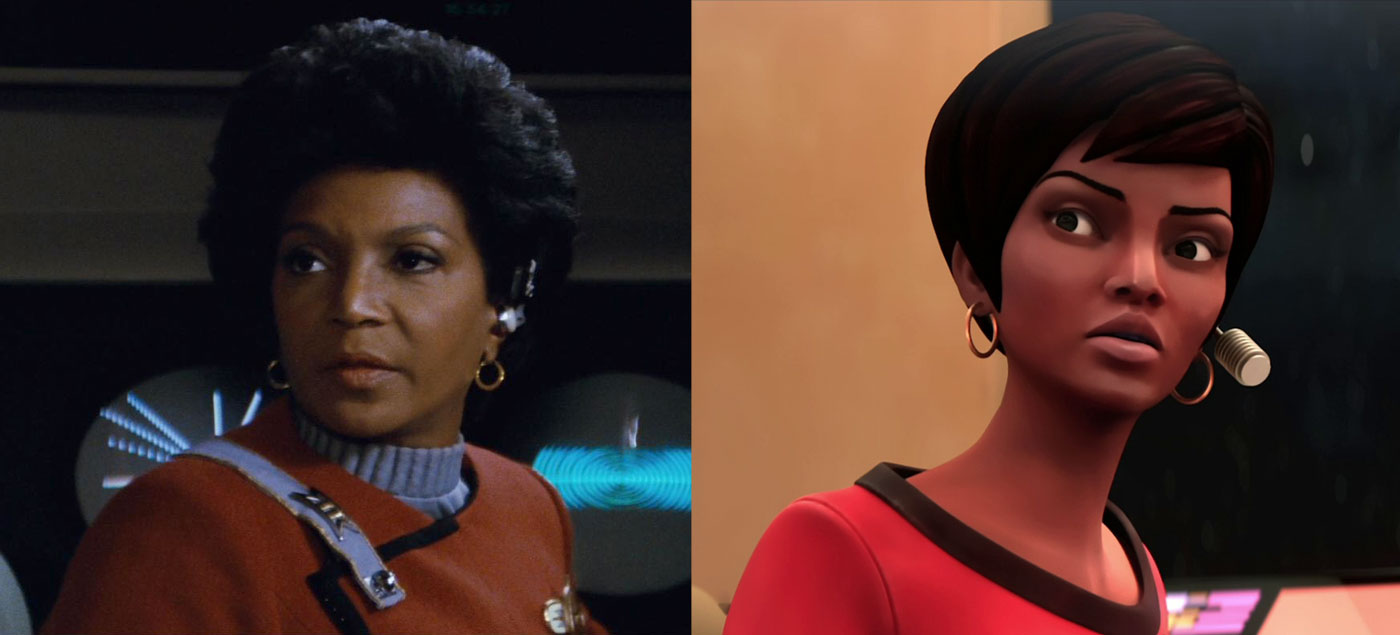
Then beyond that, it was more just the raw audio from some movies for some scenes, I think just for whatever reason wasn’t available in the Star Trek archives. I think they only had the mixed or the final mastered versions; as you can imagine, sorting through that much raw media, it’s a little bit like that warehouse at the end of Raiders of the Lost Ark.
I do want to also give kudos to the people at the Star Trek Archives who were putting up with my insane requests that always came with 15 exclamation points at the end, and, “This is utmost important and urgent: I need Spock to say ‘transport’ or ‘operational.’”
TREKCORE: It was nice to see some subtle Kelvin Timeline influence there too, with Dal’s “Fire everything!” line — mirroring Nero from that movie.
WALTKE: Yes, there’s a little bit of Nero in there, I think when he’s playing the music to distract the Klingons. That’s not AC/DC, by the way; it’s “Lighting Boom” by Prodigy composer Nami Melumad, but it’s definitely inspired by their “Thunderstruck.”
I initially wrote it as a nod to one of my favorite moments, where Zefram Cochrane plays Steppenwolf during the Phoenix launch in Star Trek: First Contact, but it’s also a bit of a double reference – to the attack with “classical music” in Star Trek Beyond.
There’s a long and storied history of weaponizing popular music in starships!
TREKCORE: Is Dal’s reaction to undertaking the Kobayashi Maru a foreshadowing for his command style in the future?
WALTKE: I think the idea of ‘the clever thief turned good,’ that’s probably something that he carries with him that could be sharpened into a tactician. He could be somebody who comes at something from an outside-the-box angle, and I think that is going to be part of his command style as he figures out his place in Starfleet or in the greater Federation.
That’s something very Star Trek: to be willing to accept those with viewpoints or even approaches to life that are vastly different from your own. Even means when you’re dealing with a scurrilous little wag like Dal who has some rougher elements to his personality, he’s slowly smoothing out as he’s learning how to be okay with living in a found family.
I think there’s a lot of kids out there that do grow up in less-than-perfect homes and don’t have that Federation to take care of them. You have to let them go through their growing pains before they become a true part of that family.
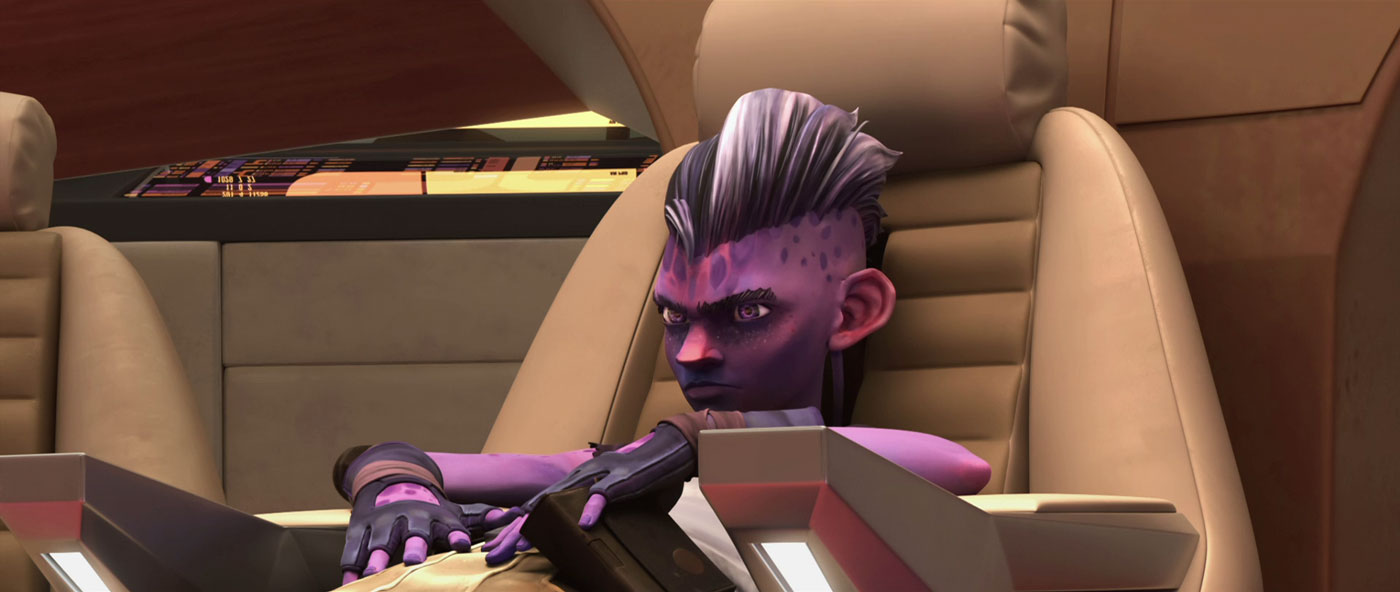
TREKCORE: Speaking of command… how much can you tell us about the surprise reveal of Captain Chakotay as the Protostar’s commanding officer?
WALTKE: There’s only so much I can say without getting into spoiler territory, but I think most Star Trek fans are smart enough to have figured out that this is not the first time that an odd timeline has shown up in a Star Trek continuity.
Usually, there’s a pretty obvious explanation for that; in that brief holographic recording from “Kobayashi,” you do hear Chakotay mention that the Protostar is being boarded — and there’s some kind of anomaly.
That’s our little hint that something has definitely gone awry in the events leading up to the Protostar landing at Tars Lemora. Past that… let me remind you that we’re only five episodes into the show!
* * *
We’re not finished with Prodigy’s Aaron Waltke yet! Keep reading as Part 2 of our lengthy interview goes into the character development behind the creation of the Star Trek: Prodigy crew, the mysteries of Murf, the potential for Prodigy toys, and more!
![]()
Star Trek: Prodigy returns with “First Con-tact” on Thursday, January 13 on Paramount+ in the United States, Australia, Latin America, and the Nordics, as well as on CTV Sci Fi Channel in Canada.
